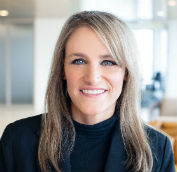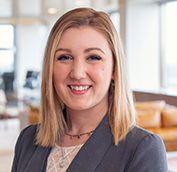2020 Minnesota General Election Overview
The 2020 general election is almost upon us! In a year of unexpected events that have profoundly changed our country, and indeed the world, it seems every week brings new twists and turns that change the dynamics of the election.
The emergence of the COVID-19 pandemic has dramatically affected the election season. The widespread lockdowns severely affected the economy, the way people work, the way people communicate, and the way people vote. The virus has become a partisan issue, with political fights over the measures taken to combat the spread of COVID-19.
This year, the presidential election overshadows other races on the ballot—and for once, Minnesota is a targeted state for the presidential candidates. Minnesota has seen numerous visits by President Donald Trump and Vice President Mike Pence, along with a visit by former Vice President Joe Biden and several stops by his surrogates. While polling throughout early summer showed a competitive race, recent polling shows Biden with a comfortable statewide lead, with strong showings in urban and suburban areas. Trump continues to dominate in rural regions, but he will need to sway suburban voters in his direction to have a chance to take the state.
A candidate in the Second Congressional District died, which pushes off the date of that election to February (pending a legal appeal).
Supreme Court Justice Ruth Bader Ginsburg died after a lengthy battle with cancer less than two months before the election; Trump nominated Judge Amy Coney Barrett to replace her, and the Senate is proceeding with her confirmation, further inflaming an already contentious election.
The summer saw peaceful protests and violent riots across America after the death of George Floyd, Breonna Taylor and Ahmaud Arbery. In the aftermath, both criminal justice reform and the violence in major cities have become central to the election.
Now, President Trump tested positive for COVID-19 with just a month to go in the election cycle.
With the way the year has gone, we can expect additional disruption and "game changers" in the weeks leading up to the election, but in the meantime the following is a voter guide that touches on the key Minnesota races in the upcoming election.
United States Senate
Senator Tina Smith (D) takes on former Congressman Jason Lewis (R). Smith was appointed by Governor Mark Dayton (DFL) in 2017 when Senator Al Franken (D) resigned after accusations of sexual harassment. She then won the special election the fall of 2018 to serve the remainder of Franken's term. Lewis, a former radio host, lost his Congressional seat in 2018. Early polls showed the race to be tight, but as Trump's support has waned across the state, so too has support for Lewis.
United States House of Representatives
Congressional District 1: First term Congressman Jim Hagedorn (R) faces Dan Feehan (D) for the second election cycle in a row. Hagedorn ran three times before capturing the open seat upon the retirement of Congressman (and now Governor) Tim Walz. Hagedorn won by a small margin—1,315 votes—in a year that was terrible for Republicans. Feehan is a combat veteran and former Department of Defense employee in the Obama administration. Polling shows the race to be neck and neck.
Congressional District 2: First term Congresswoman Angie Craig (D) takes on Tyler Kistner (R) in a race that saw the death of Legal Marijuana Now candidate Adam Weeks in September. His death triggered a Minnesota law that pushes the election to February of next year. Craig's campaign has challenged that law in court. CD2 is viewed as a swing seat; Obama carried the district in 2012 and Trump won the district in 2016. The seat was held by popular Republican Congressman John Kline for many years; after his retirement in 2016, the seat was held by the GOP in 2016 and won by Democrat Craig in 2018. Craig touts her business background on the campaign trail while political newcomer Kistner is a combat veteran who points to his foreign policy experience.
Congressional District 7: Fifteen-term incumbent Collin Peterson (D) faces a tough battle in his race against former Minnesota Senator Michelle Fischbach (R). While Peterson's district has gone increasingly red in the last 10 years, as a popular incumbent he has managed to hold on against weaker candidates as his margin of victory was slowly whittled away. Trump won by an overwhelming margin in the district in 2016—61% to Hillary Clinton's 31%—and remains extremely popular in that region of the state, which should help Fischbach's candidacy. Farming groups continue to be supportive of the sitting Ag committee chairman, but early polls showed Fischbach with a lead in the race; this might be one bright spot for Republicans nationally and in Minnesota.
Minnesota Senate
National and local events have added a number of new dynamics to what was already a turbulent election season, but one fact remains unchanged: in Minnesota, legislative majorities run through the suburbs. President Trump casts a long shadow on the legislative races in Minnesota. If he does well, Republicans do well. If support for him craters in the suburbs, the Republican Senate majority is at serious risk of flipping to Democrats.
2020 has seen redoubled efforts from Republicans on messages emphasizing public safety and promoting a philosophical split between the state's urban core and more rural areas. Both parties are counting on their own interpretations of President Trump's poll numbers and whether he will drag down all or most of the other down-ballot Republicans or not. The DFL is focusing on the public health and societal inequity crises as a winning message. Almost all of the DFL candidates are also foregoing door knocking in favor of text and phone banking, while Republications are knocking on doors daily, adding another element of uncertainty to the election.
The Senate GOP holds a 35-32 majority; the DFL needs only two additional seats to retake control of the chamber. While strong pickup opportunities exist in some increasingly left leaning suburbs and even select outstate areas, not all DFL incumbents are looking at easy victories.
Top GOP Targets:
Oddly enough, despite Trump's unpopularity in the suburbs two of the GOP's top three opportunities to add seats come in suburban areas, where they recruited extremely strong candidates.
- SD58 (Lakeville/Farmington):
Senator Matt Little (DFL) vs Zach Duckworth (R)
Republicans won both of the district's House seats by double digits, but Little held on for a close victory (just under 400 votes) in 2016. Both parties want this seat badly and Republicans are putting forward a strong candidate in Duckworth, a military veteran and current school board member in Lakeville. This race figures to be one of the most expensive and closely watched in the state. - SD53 (Woodbury/Oakdale):
Senator Susan Kent (DFL) vs Mary Guiliani Stephens (R)
As DFL Minority Leader, Kent spearheads her caucus' efforts to retake the majority. However, she cannot lose sight of her own race: in 2016 she won by less than 1% and now faces Guiliani Stephens, a well-known former mayor of Woodbury. Coincidentally, we saw a similar situation in 2016 when Minority Leader David Hann (R) led his caucus to the majority but lost his own seat in the process. - SD27 (Albert Lea):
Senator Dan Sparks (DFL) vs Gene Dornink (R)
This rural seat is one of few remaining “Trump” seats held by the DFL. Sparks won handily when he faced Dornink in 2016. Dornink, a carpenter and small business owner, will try to capitalize on Trump's popularity in the area to defeat Sparks this time around.
Top DFL Targets:
A number of GOP-held suburban Senate seats saw GOP House candidates perform poorly in the 2018 midterm elections, giving the Senate DFL multiple pick-up opportunities.
- SD44 (Open-R) (Plymouth/Minnetonka):
Greg Pulles (R) vs Ann Johnson Stewart (DFL)
Paul Anderson retired rather than face an almost impossible uphill climb. The DFL easily won both House seats in 2018 and the party is working hard for Johnson Stewart to complete the district sweep. A civil engineer by training, the campaign highlights her ability to figuratively (and literally) build bridges.
- SD56 (Burnsville/Savage):
Senator Dan Hall (R) vs. Lindsey Port (DFL)
Hall, seeking his fourth term this year, won his 2016 race by double digits but the district's two House seats were won by Democrats in 2018. Port is a nonprofit executive director who ran unsuccessfully for the House in 2018. With Trump's unpopularity in this district, many observers see this as another prime opportunity for the DFL. Note in 2016, that the GOP candidates on the ballot outperformed Trump by a substantial margin. - SD34 (Maple Grove/Osseo):
Senator Warren Limmer (R) vs Bonnie Westlin (DFL)
Limmer defeated Westlin by 20% in the 2016. However, in 2018 this district took a sharp turn to the left when the GOP lost one of the House Districts. Limmer, a realtor, is an eight-term member and well known in the district. Westlin is the owner of a family law practice. Limmer's high profile on law enforcement and public safety issues makes this is a top target for the DFL. - SD14 (St. Cloud):
Senator Jerry Relph (R) vs Aric Putnam (DFL)
In his last race Relph eked out a win by less than 200 votes against Dan Wolgamott, who turned around and won the 14B House seat two years later. Putnam, a college professor at the University of St. Johns and St. Benedict, is looking for a similar comeback result following his 2018 loss in House District 14A. College students in the St. Cloud area often play a big role in determining this race, and one question is whether those students are on campus or remote learning and voting elsewhere in November due to the pandemic. - SD26 (Rochester):
Senator Carla Nelson (R) vs Dr. Aleta Borrud (DFL)
The DFL is hopeful that Borrud has a good chance to unseat Sen. Nelson, who has handily held this seat since 2010. A retired geriatrician and active community volunteer, Borrud is pushing a message focused on access to health care, education funding and support for local farmers.
- Other opportunities:
Senator David Osmek (his is a GOP-lean seat that has increasingly trended left) drew an opponent who is extremely well known in the community; Senator Rich Draheim has two college campuses in district, Carleton and St. Olaf, whose students tend to vote DFL and are back in-person for classes, making for a tougher race for Draheim; Senator Karin Housley (another suburban seat the DFL will give a long look to—and they have the $$ to fish), Senator Roger Chamberlain (see Housley).
Minnesota House of Representatives
The House DFL is looking to protect their 75-59 majority, which was largely built on suburban wins in 2018. Increased turnout due to the presidential race is generally expected to help Democratic candidates. It's hard to say if that will hold true this year as a number of these seats were decided by very slim margins in 2018 when the DFL base turned out en masse and the GOP largely stayed home. Certain open seats could also be very competitive going into November.
Top GOP Targets:
- HD5A (Bemidji):
Rep. John Persell (DFL) vs Matt Bliss (R)
Persell and Bliss face off in a rematch of their 2018 race that was decided by a mere 11 votes. This district is another that went for President Trump four years ago, and could be a tough hold for the DFL; the GOP thinks it is a lock for them. - HD33B (Minnetonka, Chanhassen, Excelsior):
Rep. Kelly Morrison (DFL) vs Andrew Myers (R)
This longtime GOP seat was lost in the DFL sweep of 2018. A physician by profession, Dr. Morrison scored a tight victory over her opponent by under 1%. She's hoping her focus on health care and environmental issues will help again this year and prove the initial win was not a hiccup. However, a strong GOP candidate in Minnetonka Beach City Council member Myers makes this a top pick-up opportunity for the GOP. - HD38B (North Oaks, Hugo, White Bear Lake):
Rep. Ami Wazlawik (DFL) vs Elliot Engen (R)
The longtime Republican seat was narrowly flipped by Wazlawik by less than 2% in the last election. Recent protests against law enforcement attended by a St. Paul DFL candidate in Hugo, who threatened to burn down the town, have put an even brighter spotlight on this district. Young candidate Engen has a chance to return it to GOP control. - HD54A (South Saint Paul, Cottage Grove):
Rep. Anne Claflin (DFL) vs Keith Franke (R)
Compared with some of her colleagues Claflin's 3-point win was relatively robust in 2018. This is a district that has gone back and forth between Republicans and Democrats in recent years, and promises to be a close race again in a rematch with former Representative and small business owner Franke. - HD55A (Shakopee):
Rep. Brad Tabke (DFL) vs Erik Mortensen (R)
Another suburban rematch where Trump held an edge in 2016 and other Republicans on the ticket performed well. However, in 2018, Tabke won by 3% over Mortenson, who had defeated the incumbent Republican in a primary. - HD56A (Open-DFL) (Burnsville, Savage):
Jess Hanson (DFL) vs Pam Myrha (R)
First-time candidate Jess Hanson squares off against former House member Myrha, looking to replace retiring freshman Rep. Hunter Cantrell. While Cantrell had a relatively solid 5 point win in 2018, open seats can sometimes create unexpected campaign dynamics. In addition to be being a former state representative, Myrha has also been a candidate for Lieutenant Governor and State Auditor. - HD56B (Burnsville, Lakeville) (Open-DFL):
Kaela Berg (DFL) vs Roz Peterson (R)
Another first term DFLer retires—another former GOP Rep steps up to run. The retirement of Rep. Alice Mann opens the door for newcomer Kaela Berg, a flight attendant and union activist, while Peterson is looking to reclaim the seat she lost by five points to Mann in 2018. Again, another race without an incumbent and a well-known challenger. - Other races to watch:
HD14B (St. Cloud area) Rep. Dan Wolgamott (DFL) won in 2018 against a weak GOP incumbent who still picked up 42% of the vote; HD 27B (Austin area) Rep. Jeane Poppe (DFL) represents a district that went for Trump by 8% in 2016—the GOP thinks they have a good candidate in this area and are hoping to ride Trump's coattails.
Top DFL Targets:
The DFL picked off many of the toss-ups and lean-GOP districts in 2018, although a few opportunities remain
- HD5B (Open-R) (Grand Rapids, Coleraine):
Joe Abeyta (DFL) vs Spencer Igo (R)
The retirement of Sandy Layman makes this seat a toss-up. A former DFL stronghold, this district went Republican in 2016 and they held the seat in 2018. Spencer Igo, former staff for Congressman Pete Stauber, takes on Joe Abeyta, La Prairie City Council member. - HD37B (Blaine):
Rep. Nolan West (R) vs Amir Joseph Malik (DFL)
Second-term legislator West won in 2018 by a mere 153 votes. He faces the same opponent, Amir Joseph Malik, this year. - HF47B (Chaska/Chanhassen):
Rep. Greg Boe (R) vs Daniel Kessler (DFL)
Another tight win for the GOP in 2018, when Boe won by 117 votes. This is a longtime GOP district that has been trending more left in each election.
Links to Election Results
Minnesota Secretary of State Election Results
KSTP Election Results



